BACSIM or Brain Advanced Computer Surgery Simulator
As part of their efforts to train medical professionals in complex neurosurgical treatments, researchers and students from the UNAM's Institute of Applied Sciences and Technology (ICAT) have developed a virtual reality and robotic training simulator.
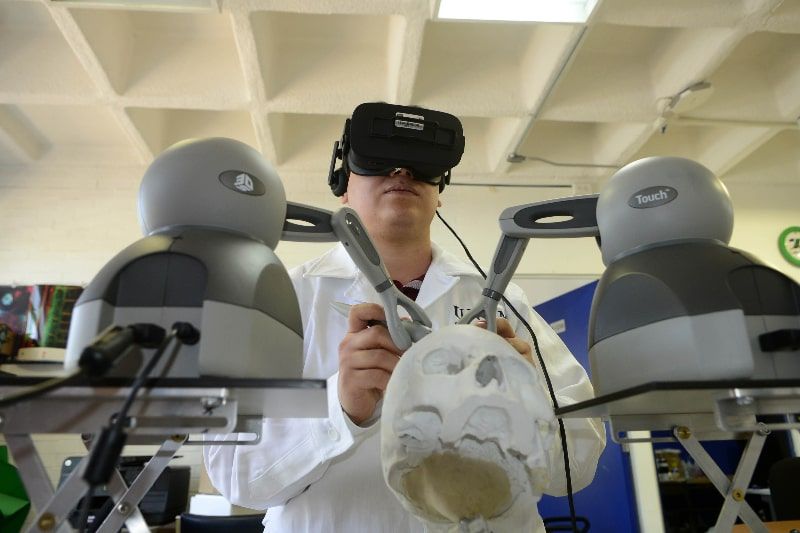
To train medical professionals in complex neurosurgery treatments, researchers and students from the Institute of Applied Sciences and Technology (ICAT) of the UNAM developed a virtual reality and robotics training simulator.
Miguel Ángel Padilla Castañeda and Juan Salvador Pérez Lomelí, leaders of the project tested at the General Hospital of Mexico, explained that it was named BACSIM, or Brain Advanced Computer Surgery Simulator, and is in the patenting phase.
The only one of its kind in the world, BACSIM combines physical elements with a mannequin head and robotic technology to perform the medical procedure, with three-dimensional computer simulation for the training of various surgical procedures.
"There is no system similar to ours worldwide that combines physical and virtual models of patients. The two or three that exist also do not consider, in the case of aneurysms, the exploration of the Silvian valley, we are the only ones that have incorporated it (work in which doctoral student Sergio Teodoro Vite collaborated)," Padilla Castañeda emphasized.
The development of BACSIM, which began more than six years ago, started with the purpose of building a workstation that would create, as far as possible, a scenario of a surgical procedure. Subsequently, they incorporated simulation models, through virtual reality and mathematical models of tissue biomechanics, to represent high-risk surgical techniques.
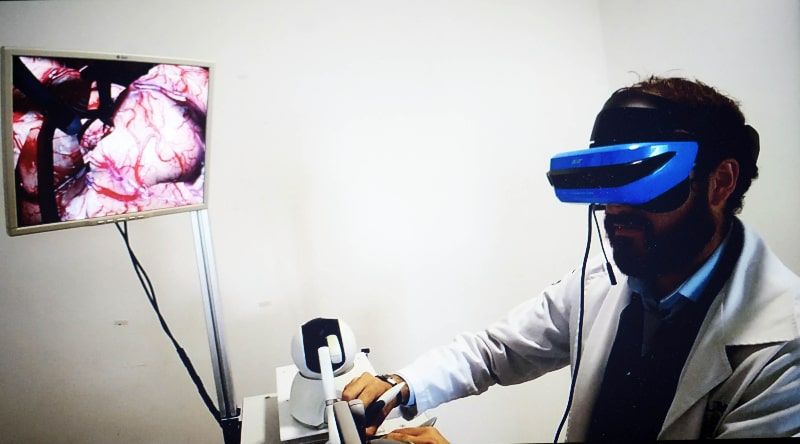
The system was designed in collaboration with doctors from the General Hospital of Mexico "Dr. Eduardo Liceaga", led by neurosurgeon Aldo Hernandez; it allows the professional in training to experience microsurgery, including full-scale ergonomic proportions of the instruments and a three-dimensional viewer that shows the surgeon a scene similar to what he would see in real life under the electron microscope.
The surgeries simulated by BACSIM are among the most complex and risky to learn, and normally take years of training for the physician, especially if one considers that at the international level he/she must accumulate at least 100 to be considered an expert.
"The opportunities to learn are scarce and are risky for patients. That is why we created this system that has physical and virtual elements, with a representation of the surgical site and two robots with which the virtual elements are manipulated and provide the sensation of touching the tissue, giving a very similar sensation to being in the operating room, both tactilely and visually," Padilla Castañeda commented.
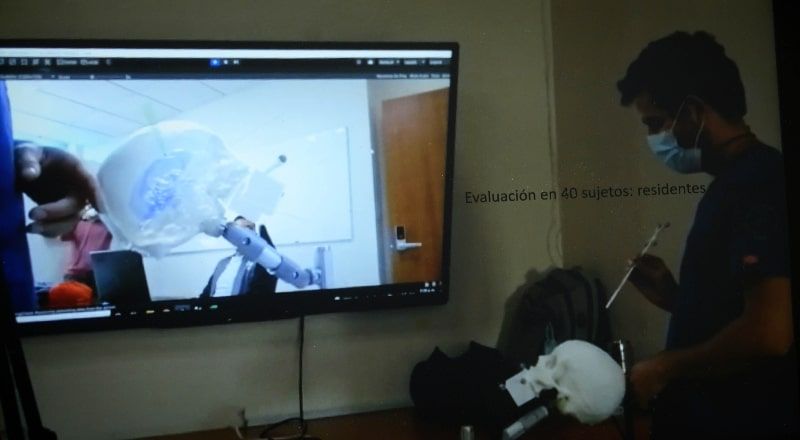
Initially, the development was selected by the University Binational Node and received support from the National Council of Science and Technology; later from the Secretary of Education, Science, Technology, and Innovation of Mexico City to broaden its scope.
For the moment, 15 expert surgeons at the General Hospital of Mexico -where a module is permanently installed- carried out experimental evaluations with residents, whose results also show that the simulator is sufficiently realistic in its training programming for aneurysms.
BACSIM is the first technology of its kind in the country to be installed and evaluated in a hospital, i.e., outside the research laboratory.
"A study was conducted with a small team of surgeons who evaluated the system's fidelity and, for example, we demonstrated that expert surgeons tend to move the cerebral lobes differently when they have to perform the scan compared to novices. This is normal in doctors in training and leads them to perform less exploration or to exert a greater force on the tissues, compared to experts," added the specialist in biomechanics patterns.
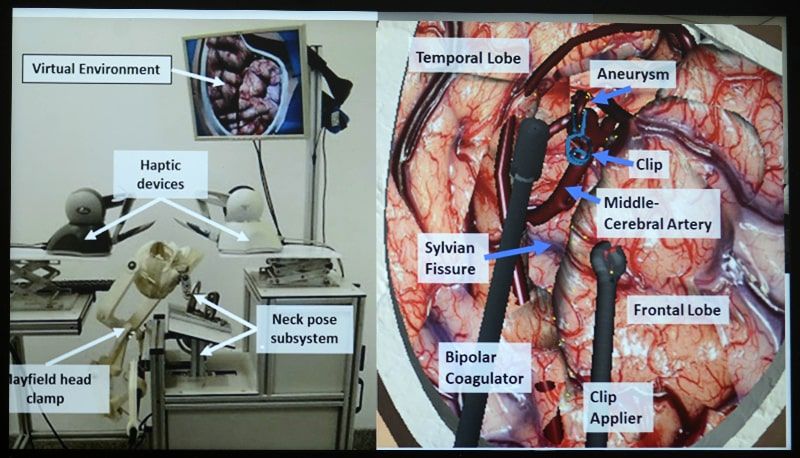
Equipment created in Canada and Japan, Pérez Lomelí added, uses the same principle, but is limited to a single type of medical procedure and is expensive, which is why the one created at UNAM has the additional advantage that it is more economical and allows professionals to practice different surgical procedures.
"The simulator should be as real as possible to the operating room. The surgeon is not seated in front of a computer but standing up as if facing a patient, and the aim is for the device to be ergonomically active. We have made, in addition to a large simulator, other small ones that would allow us to work both nationally and with the Latin American market," said the expert in prototype development.
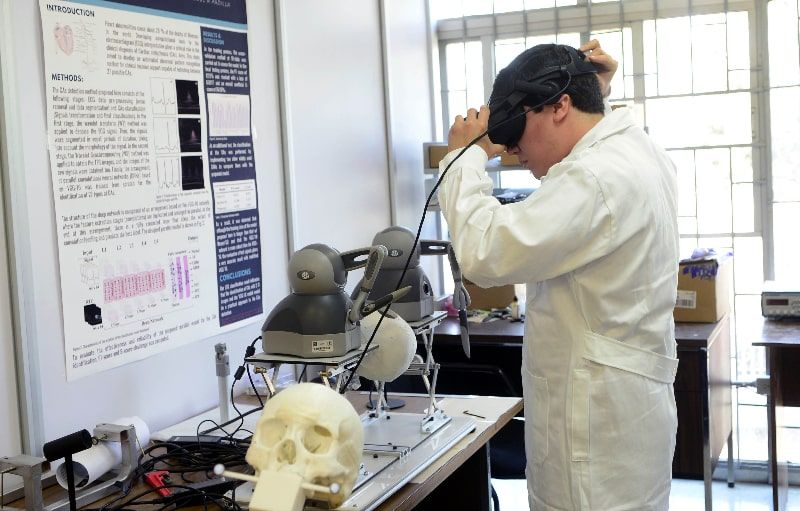
Constant improvement of BACSIM
In addition to applying for a national patent for the complete system, BACSIM professionals are working on expanding the virtual reality scenarios that include biomechanical simulation of brain soft tissue deformation and anatomical structures such as vascularities, cerebral lobes, tumor, skull, and the execution of the surgical approach through the brain.
Additionally, César Domínguez Velasco, a Ph.D. student in Computer Science and Engineering, and Jessica Alatorre Flores, an MSc student, collaborate in simulating a ventricular function to decompress the brain, a delicate operation used either in children with hydrocephalus or patients with diabetes who suffer from it.
This is done in collaboration with doctors Victor Alcocer and Isaac Tello, from the National Institute of Neurology and Neurosurgery "Dr. Manuel Velasco Suarez", to offer the student a guide or visual map of the ideal angle, trajectory, and depth to perform the procedure.
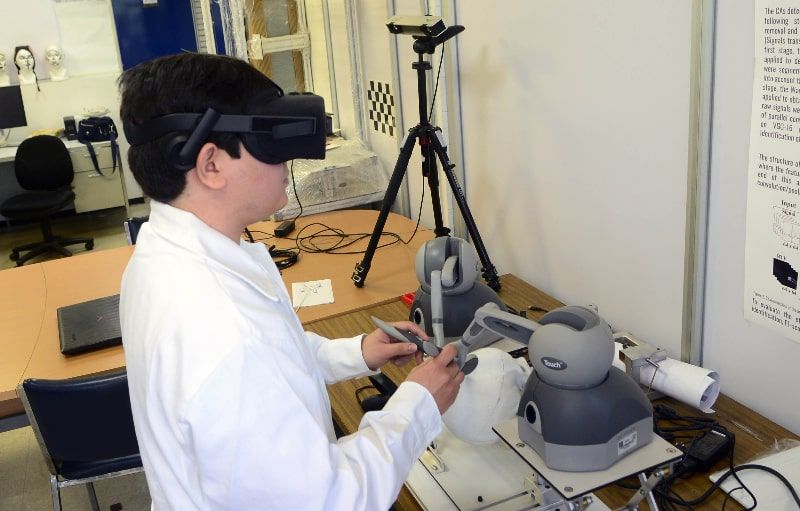
Daniel Vargas Castro, a master's student in Computer Science and Engineering, participated in the development of the program for the resection of brain tumors, specifically meningioma, considered the most common of this type of problem.
Using mathematical models, the researcher simulated the behavior of both the brain and the tumor to make it look and feel as realistic as possible so that the user experiences the resection of the latter as if he were in front of the patient.
"The real idea in surgery is to remove as much tumor as possible, but there is a risk that healthy tissue will also be removed, and the simulator just gives this metric; here it tells us exactly how much tumor you removed and how much brain you removed," he said.




